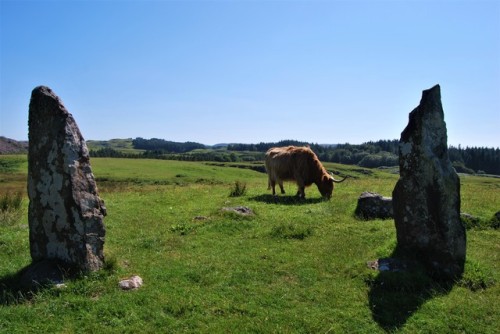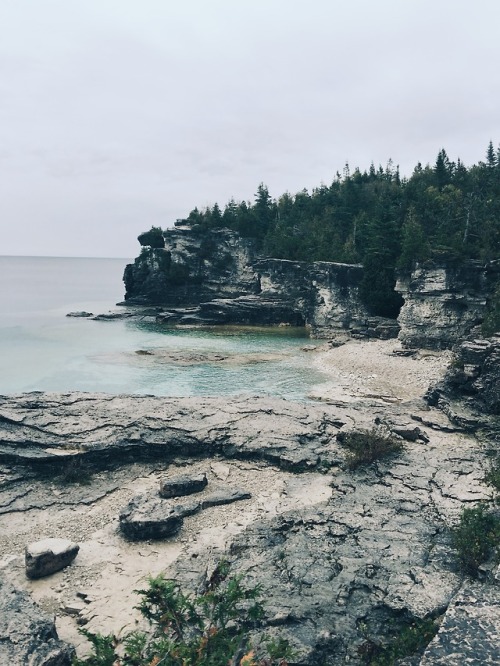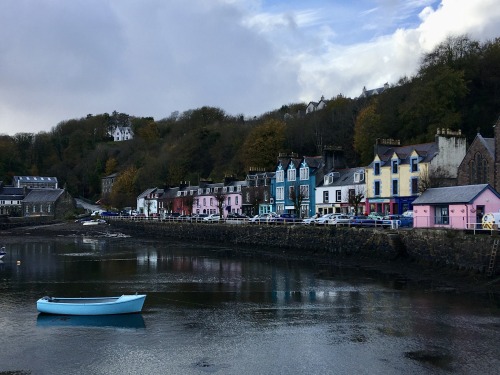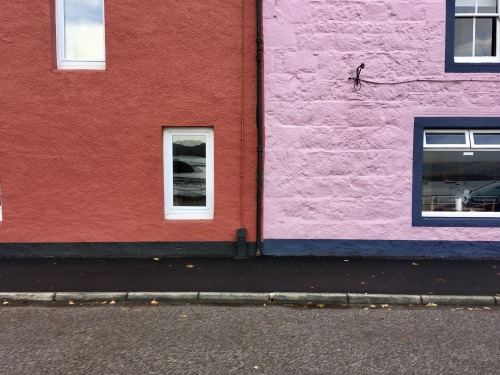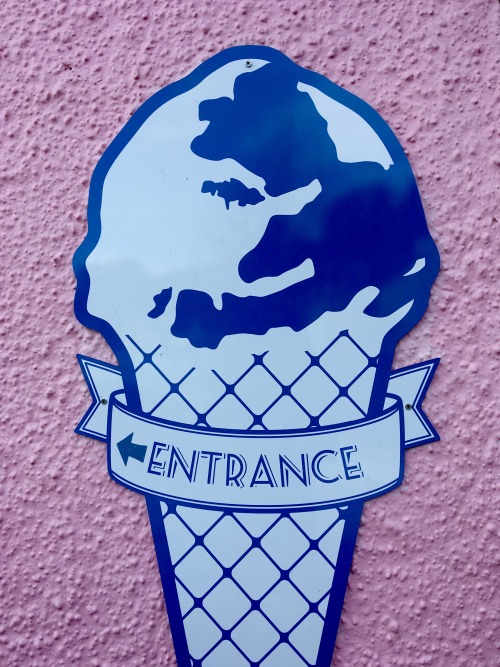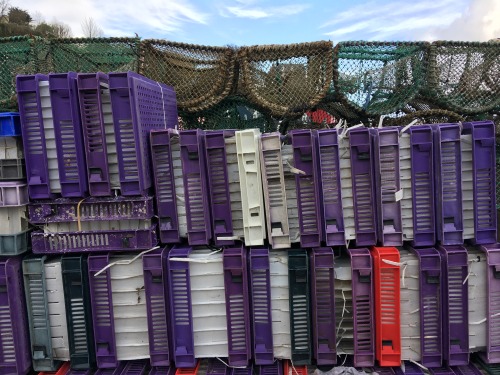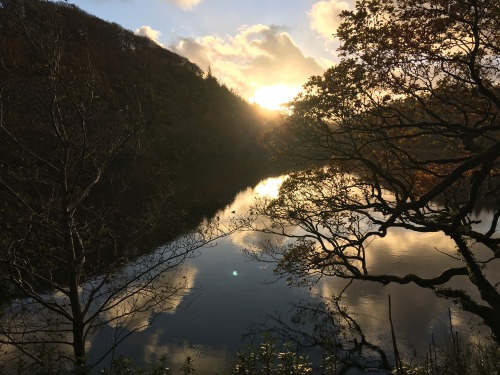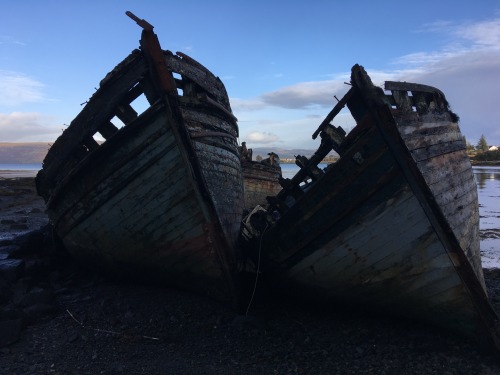#tobermory
Glengorm standing stones, Isle of Mull, Scotland 2017
Three standing stones (around 2 metres high) occupy a commanding position on the end of a ridge in the broken ground to the west of Glengorm Castle. In the early 1880s only one of the stones was upright, but the other two had been re-erected by 1942. The stones are surrounded by a modern enclosure-bank and the packing-stones visible around the two re-erected stones are also of a recent date. The site was excavated as part of a four week survey of the stone alignments of northern Mull. The northernmost of the three stones appears to have been re-erected near its original position, while the southernmost stone has been dragged NE, to be wedged upright in a cleft in the bedrock. The original alignment did not repeat the trend of other sites in the area. Further conclusions await processing of the survey data.
The existence of a large mound of stones nearby was recorded in 1883, but it is no longer visible, and it is not clear from the description whether it was a prehistoric burial cairn or not.
Glengorm was originally known as Sorne. In 1850, the new landlord, one James Forsyth, began to ‘improve’ his estate in the usual fashion in the Highlands - by clearance. The main house was replaced by a large and imposing baronial 'castle’. Forsyth sought advice on a new name for the estate from one of the few remaining tenants of the land, an old lady, and she suggested Glengorm, meaning Blue Glen. Little did he suspect that the name would commemorate, for all time, the days when the glen was indeed blue with smoke from the burning homesteads.
Post link
Selfies in blue….
#canada #explorecanada
#ontario #exploreontario #tobermory #flowerpotisland #parkscanada #brucepeninsula #explorethebruce #selfie
#travelphotography #landscapephotography
#blueheronco #sightseeing (at Bruce Peninsula National Park)
https://www.instagram.com/p/CDpeyyGDLFm/?igshid=1eay7ezzuytrj
Post link

The first of the real autumn storms, coupled with increasing Covid-19 cases, really began to bite as we spent a night on Colonsay and then sailed on to Islay. Almost nothing at all was open on Colonsay, and restrictions in Scotland meant no alcohol could be served indoors, so our plans to visit the Lagavulin distillery had to be paused.
As if taunting us, we could smell the whisky in the air as we cycled inland from pretty Port Askaig. The whisky lost from the barrels during the ageing process is known as ‘the angels’ share’ – and the sheer quantities of it on Islay must mean the angels get good and drunk.


We cycled across to Port Charlotte and one of M’s favourite pubs of all time, the Port Charlotte Hotel. It rained for two nights and a day without letup, and we hung out anywhere indoors that we could find, including the away team changing room at the community centre (“visiting linesmen will run the line closest to the shore”). A dram in the garden of the Port Ellen Hotel during a brief sunny spell was the closest we got to a grand whisky tour. We’ll just have to come back.
40mph gusts followed us on the ferry back to Kennacraig on the the mainland. Luckily the trees saved us from the worst of it, but we still got cold and wet in some sharp showers on the way to Crinan. The Paps of Jura towered above us as we crawled up the coast, though our reward was spotting three red squirrels in space of a few minutes. One sat on the mossy stone wall near us, clutching an acorn and twitching its little fluffy ears.
Crinan was jammed with yachts with polished wooden decks; one was so huge it had its own motor launch strapped to the back. The harbour was beautiful, with a clutch of whitewashed buildings and a tiny lighthouse. An old boatshed had been converted into a gallery, with horrible oil pastels on sale for £6,000 a pop. We quickly realised that Crinan was a little out of our price range.
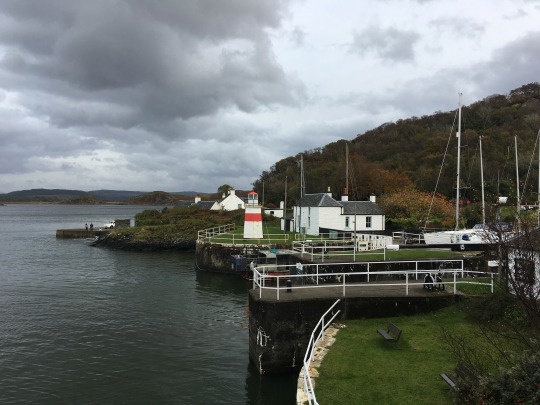
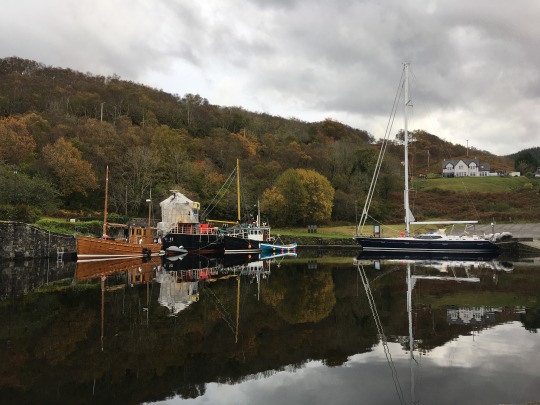
We made it back to Oban along the wet logging road just as night fell. It was the first night after the clocks had changed, and darkness at 5pm came as a real shock. We sailed for Mull with the end of a hurricane coming for us, after smashing America to bits: our time on the island was mainly spent trying to keep the tent upright, and then sitting by the fire in the Mishnish pub in Tobermory, drying out socks that had been wet for days. 60mph wind was forecast and we managed to squeeze onto an earlier ferry than planned, narrowly avoiding getting stranded.
The end of the trip came sooner than we had hoped. England was about to go into a second national lockdown, so we needed to get home pronto. Luckily it was far easier than last time, when I almost got stranded in Delhi in March 2020; this time it was a two-day cycle from Glasgow to Edinburgh and then a long, slow train south. As we crossed back over the English border we raised a glass: to a truly memorable adventure in a topsy-turvy year.
Read the first Island Hopping blog: Back in the saddle


